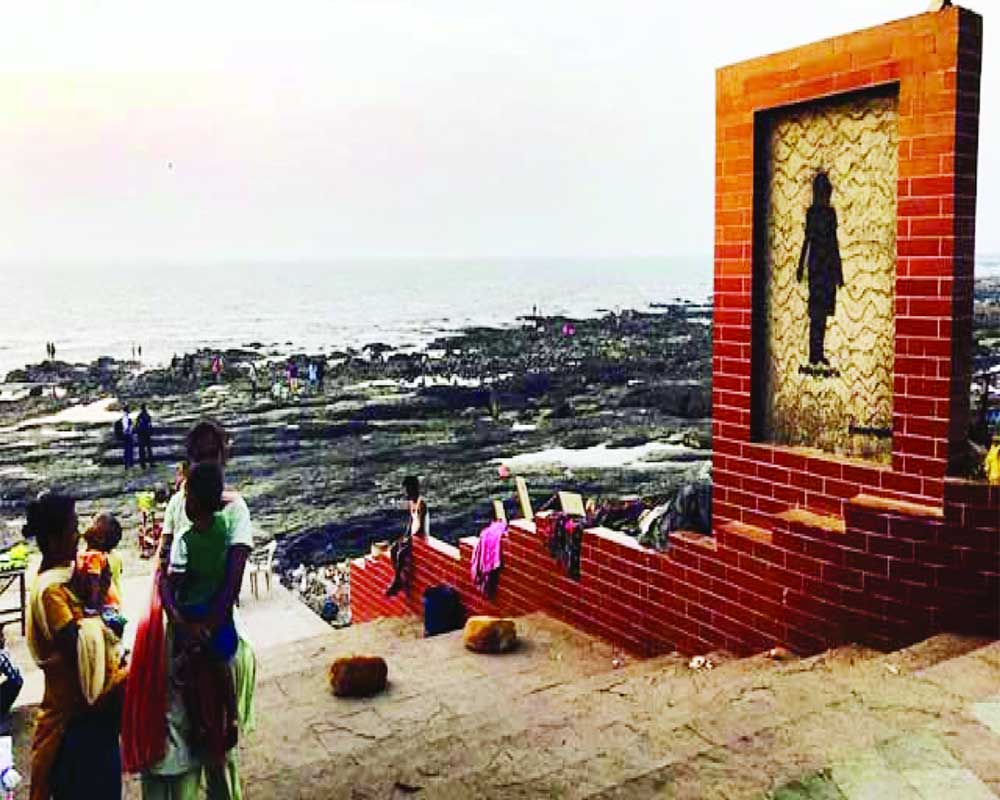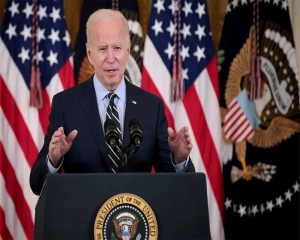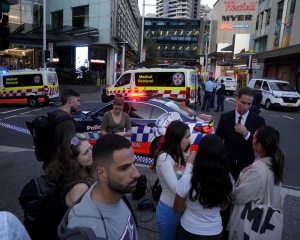‘Missing’ was started to create awareness about girls who are kidnapped from Indian villages and sold as sex slaves around the world, writes Leena Kejriwal in a first person account of how she put together a powerful public art project
It was in 2013, that I met Karishma at a small tailoring shop in Sunderbans. Her head was lowered as she was busy sewing a colourful kurta. She looked up to see me, and I caught her sweet smile and sharp features. We spoke for a while and the conversation slowly drifted to how she was trafficked. But at the very mention of it, her whole being suddenly froze — and within seconds — her eyes widened and were blank.
I realised that we had reminded her of a memory that haunted her. She did not want to speak about it. It took some time but I managed to calm her down. When she finally spoke, the one thing that she said struck me hard. She said she did not know that she could have been “trafficked”. She did not know that young girls and women from her region were victims of sex trafficking. They had no idea that a dark world like this even existed.
This memory has stayed, grown, and over the years, made me realise the importance of building awareness in the public, especially among young girls and women, on this rapidly growing flesh trade.
So though I was then creating books/ putting up exhibitions and multi-layered installations in gallery spaces, I realised I wanted to engage the public out and not within these walls. In 2013, I took my first step towards creating a strong public artwork that would transcend language barriers that would talk to the public.
From this, emerged the Missing silhouette.
In 2014, I launched ‘Missing’ Public Art Project to engage the public on the issue of sex trafficking. It was the culmination of years of my work on the issue. I had worked in Kalighat, Bow Bazaar, Khidderpore. Spent a lot of time with Ruchira Gupta, founder of Apne Aap Women Worldwide, Sraboni Sarkar of South Kolkata Hamari Muskaan and Urmi Basu of Newlight in Kalighat, and understanding the angst which those working in these spaces faced because of the constant and growing demand which led more girls to be sold.
The Missing had a good launch at the India Art Fair with JSW and immediately caught the eye of many international and national media through its installations, the larger than life black silhouettes of young girls placed against the urban skyline. Constructed from iron sheets, forged and painted pitch black, they seem like sharp, black holes cut out into the sky. Holes, into which, millions of girls disappear from the face of the earth. It was meant to invoke in eye of the beholder the sense that something is gone. The public art works serve as both a symbol of what is and is not, what we must address, a reminder, not an illusion, a fact, not a suggestion, something permanent rather than ephemeral.
As my intention was public engagement, we soon started building an online community through social media outreach. This gave us an insight into what people think, how they think and what points or platforms can be a catalyst or a game changer in shaking the status quo in our society with regards to trafficking for sexual exploitation. We wanted to build an army that would join us in our cry to end demand for vulnerable young girls and women.
At this point, we started exploring the idea of crowd funding and making the Missing Project for the people, by the people. The crowd funding not only helped us prepare for the amazing opportunity to bring out our first set of public installations in future but also gave us a golden opportunity to create the Missing game for a cause. This was a one of its kind gaming app, engaging the public by putting them into the shoes of a trafficker.
We also thought of a means of powerful public engagement at the ground level. Something that was very visual with a high impact and having a high recall. That is how the stencil project came to life through the Missing silhouette.
The Missing silhouette is seen again and again across the country in the street stencil project. We have realised the power of the stencil art. It has become the most visual and powerful part of the Missing campaign.
This got us to another milestone in the journey. We formed Missing Link Trust in October 2015 and we continue to work tirelessly and passionately to reach out to more and more stakeholder through all our campaigns.
We want Missing to be synonymous with awareness against trafficking for sex. We want our engagement to provide knowledge as arsenal to children, women, young girls and boys so that they can avoid being victims of trafficking. Parallely, through all our engagement, we want to have an undercurrent running across our programmes that mind shapes the young males in India into de-objectifying the female human body and creating more sensitive and empathic youth towards gender differences. Further, it would also create a more compassionate view for the victims of sex trafficking. One of the last key things is also to create an environment among young girls where they de-clutter their concept of femininity, which is currently overridden by the masculine gaze.
We realised that trafficking is primarily demand driven. In simple terms, demand equals supply and an unaware public, directly and indirectly, contributes to this demand. If we created awareness, we knew that we could hit the pain point and work towards ending demand.
The Missing primarily works in anti-trafficking awareness. We strongly believe that awareness equals prevention and use different awareness tools and methodologies in our mission.
The Missing Public art works are larger than life black silhouettes of young girls placed against the urban skyline. Constructed from iron sheets, forged and painted pitch black, they seem like sharp, black holes cut out of the sky. Holes, into which millions of girls disappear, from the face of this earth. These expanded forms act as memorials to these young girls who have disappeared, vanished into thin air. It is hoped that these emblematic silhouettes generate curiosity, recognition and finally a sense of deep loss, recovering them from the abyss of the sky. A recovery that inspires millions of others to act on behalf of the fate of those who have disappeared and are alluded by justice. So far, the installations have been showcased with the India Art Fair and Pune Biennale.
The Stencil Campaign uses the Missing Girl silhouette. It is a powerful means for engaging the public and providing ownership in the campaign to end demand. Each person who creates a stencil becomes a spokesperson for ‘Missing’. We want the public to have ownership in the drive to end demand and make it an inclusive and open campaign. It was critical to create this shift from an exclusive to an inclusive structure. The silhouette of a young girl symbolises a black hole into which millions of girls disappear from the face of the earth.
She is a constant reminder and a remembrance of the millions of girls who have been lost. She is a girl who has lost the power of making choices. This stencil artwork also serves as a method of sharing the very important information that the number 1098 is the pan-India Childline helpline for children in distress or missing.
Though this very language of using public art and a global stencil campaign is very innovative the ‘Missing’ Game For A Cause has been the most unique to our campaign. It’s a role-playing game designed to put players in the decision-making seat to make choices and assess risks to experience what a ‘missing girl’ goes through when she is trafficked into the cruel world of prostitution; a world into which millions of girls are lost every year. The gameplay and storyline invoke discomfort in the player through the intensive and claustrophobic experience of being in the victim’s shoes. ‘Missing’ Game For A Cause is a first of its kind game built on the Unity platform to be translated in Indian vernacular languages.
This puts Missing as an innovator and changemaker in leveraging technology in a unique way to bring about long-lasting social change. The game, much like Missing’s other initiatives, focuses on raising awareness and thus prevention of sex trafficking. The game is easily playable for anyone with access to a smartphone. This gives us the ability to reach and create awareness amongst a vast and varied, urban and rural audience through the vernacular localisation of the game. The game has the potential reach of millions in all parts of the world, and most importantly in remote areas where other traditional means of awareness generation cannot penetrate
with ease.
The storyline for ‘Missing’ Game For A Cause was formed on the basis of interviews with trafficking victims and survivors. Soon after its launch, the Missing game won the NASSCOM Indie game of the Year award and received 820,000 organic downloads across 70+ countries on the Google Play Store and App Store. The initial localisation in Bengali organically reached the number1 spot in the Bangladesh Google Play Store within a week of its launch.
The Missing project has been running under the aegis of the Missing Link Trust for nearly four years now and every day is an exciting day! There are Games Apps, school programmes, skill training and digital literacy programs being rolled out. All our actions are driven with the focus to stop trafficking and ending demand and help save the next girl from getting trafficked. We hope it will make a difference.
The writer is a photographer, installation artist and founder of the MISSING campaign


























